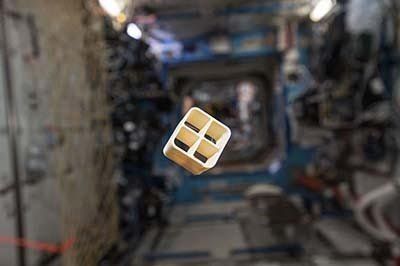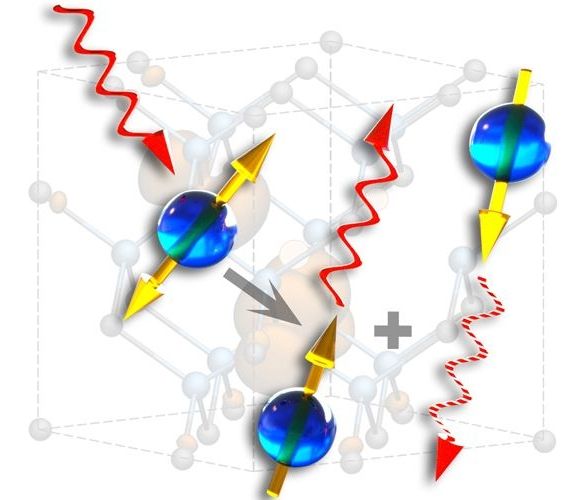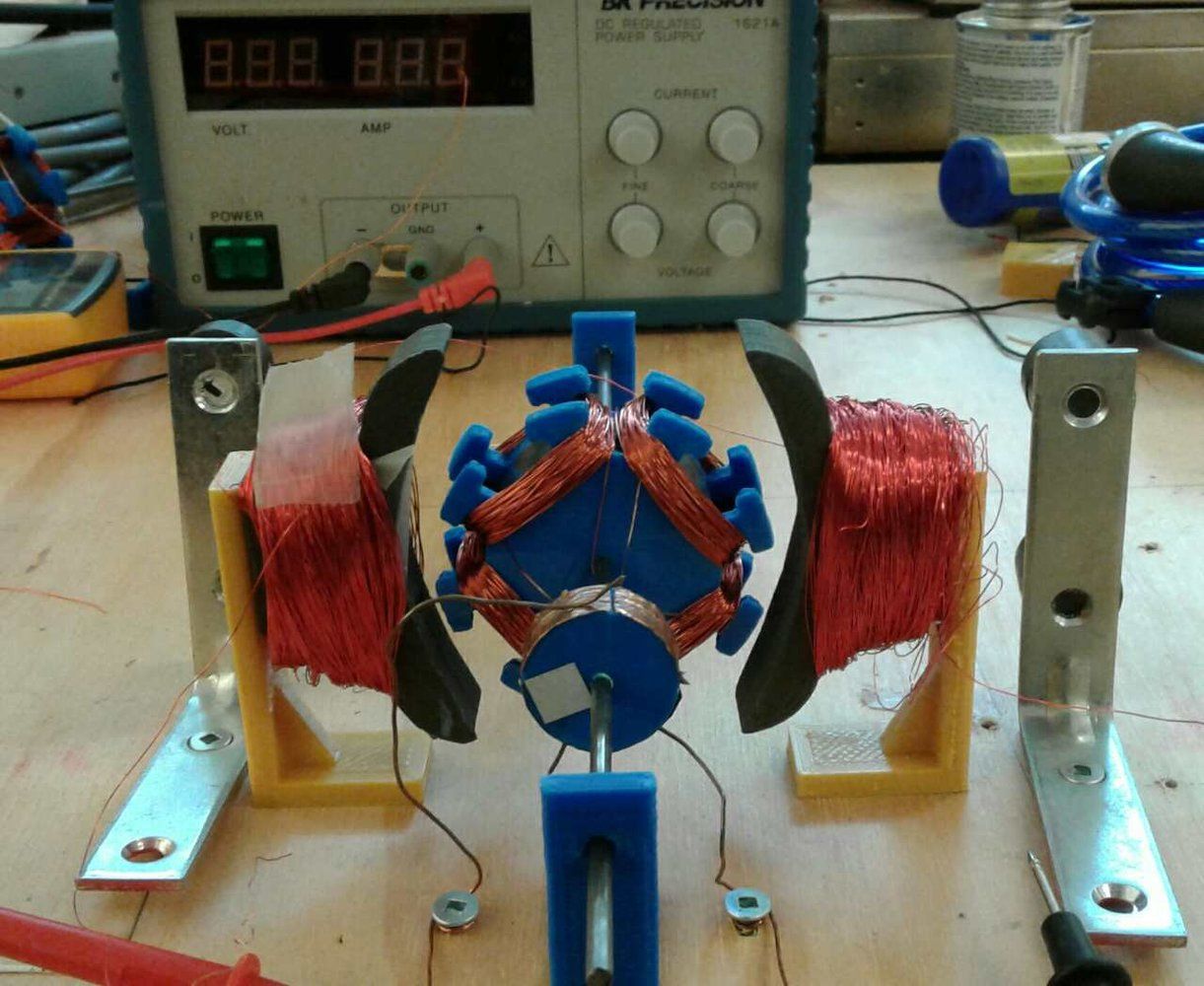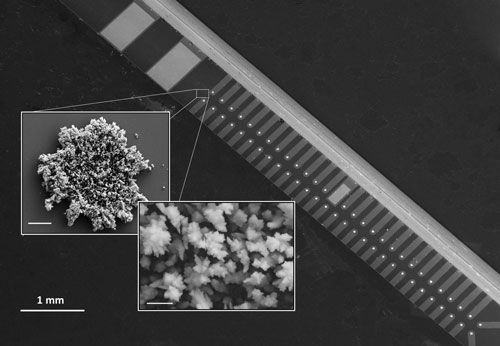Archive for the ‘engineering’ category: Page 191
Jul 20, 2017
Made In Space Begins 3D Printing PEI/PC on the ISS
Posted by Klaus Baldauf in categories: 3D printing, engineering, space
Made In Space has 3Dprinted a part on the International Space Station that is made from engineering-grade PEI/PC plastic.
Jul 14, 2017
Rice team developing flat microscope for the brain
Posted by Klaus Baldauf in categories: engineering, government, neuroscience
HOUSTON – (July 12, 2017) – Rice University engineers are building a flat microscope, called FlatScope TM, and developing software that can decode and trigger neurons on the surface of the brain.
Their goal as part of a new government initiative is to provide an alternate path for sight and sound to be delivered directly to the brain.
The project is part of a $65 million effort announced this week by the federal Defense Advanced Research Projects Agency (DARPA) to develop a high-resolution neural interface. Among many long-term goals, the Neural Engineering System Design (NESD) program hopes to compensate for a person’s loss of vision or hearing by delivering digital information directly to parts of the brain that can process it.
Continue reading “Rice team developing flat microscope for the brain” »
Jul 5, 2017
New 3D chip combines computing and data storage
Posted by Klaus Baldauf in categories: biotech/medical, engineering, nanotechnology, robotics/AI
As embedded intelligence is finding its way into ever more areas of our lives, fields ranging from autonomous driving to personalized medicine are generating huge amounts of data. But just as the flood of data is reaching massive proportions, the ability of computer chips to process it into useful information is stalling.
Now, researchers at Stanford University and MIT have built a new chip to overcome this hurdle. The results are published today in the journal Nature, by lead author Max Shulaker, an assistant professor of electrical engineering and computer science at MIT. Shulaker began the work as a PhD student alongside H.-S. Philip Wong and his advisor Subhasish Mitra, professors of electrical engineering and computer science at Stanford. The team also included professors Roger Howe and Krishna Saraswat, also from Stanford.
Computers today comprise different chips cobbled together. There is a chip for computing and a separate chip for data storage, and the connections between the two are limited. As applications analyze increasingly massive volumes of data, the limited rate at which data can be moved between different chips is creating a critical communication “bottleneck.” And with limited real estate on the chip, there is not enough room to place them side-by-side, even as they have been miniaturized (a phenomenon known as Moore’s Law).
Continue reading “New 3D chip combines computing and data storage” »
Jun 30, 2017
How Will We Stop Hackers From Invading Our Brains Once We’re Cyborgs?
Posted by Shailesh Prasad in categories: biotech/medical, cyborgs, engineering, neuroscience, policy
Rapid developments in brain-machine interfacing and neuroprosthetics are revolutionizing the way we treat paralyzed people, but the same technologies could eventually be put to more generalized use—a development that’ll turn many of us into veritable cyborgs. Before we get to that point, however, we’ll need to make sure these neural devices are safe, secure, and as hacker-proof as possible.
In anticipation of our cyborg future, researchers from the Wyss Center for Bio and Neuroengineering in Geneva Switzerland have published a new Policy Forum paper in Science titled, “Help, hope, and hype: Ethical dimensions of neuroprosthetics.” The intent of the authors is to raise awareness of this new breed of neurotechnologies, and the various ways they can be abused. Importantly, the researchers come up with some ways to mitigate potential problems before they arise.
Jun 26, 2017
Dickson Despommier: Urban Agriculture and the Vertical Farm // Economy, People & Planet 2015
Posted by Odette Bohr Dienel in categories: engineering, environmental, science
Jun 23, 2017
Atomic imperfections move quantum communication network closer to reality
Posted by Saúl Morales Rodriguéz in categories: engineering, quantum physics
An international team led by the University of Chicago’s Institute for Molecular Engineering has discovered how to manipulate a weird quantum interface between light and matter in silicon carbide along wavelengths used in telecommunications.
The work advances the possibility of applying quantum mechanical principles to existing optical fiber networks for secure communications and geographically distributed quantum computation. Prof. David Awschalom and his 13 co-authors announced their discovery in the June 23 issue of Physical Review X.
“Silicon carbide is currently used to build a wide variety of classical electronic devices today,” said Awschalom, the Liew Family Professor in Molecular Engineering at UChicago and a senior scientist at Argonne National Laboratory. “All of the processing protocols are in place to fabricate small quantum devices out of this material. These results offer a pathway for bringing quantum physics into the technological world.”
Continue reading “Atomic imperfections move quantum communication network closer to reality” »
Jun 19, 2017
Self-Replicating 3D Printers Could Build Moon Bases, Fight Global Warming
Posted by Montie Adkins in categories: 3D printing, engineering, satellites, sustainability
A 3D printer that could re-create itself from lunar material is in development at a university in Canada.
The technology could one day enable humans to 3D-print lunar bases, as well as conduct in-space manufacturing of satellites and solar shields on the moon that could help fight global warming, according to Alex Ellery, an associate professor in the Department of Mechanical and Aerospace Engineering at Carleton University in Ottawa, who is leading the project.
“I believe that self-replicating machines will be transformative for space exploration because it effectively bypasses launch costs,” Ellery told Space.com. [How Moon Bases and Lunar Colonies Work (Infographic)].
Continue reading “Self-Replicating 3D Printers Could Build Moon Bases, Fight Global Warming” »
Jun 14, 2017
Organ chips get smart and go electric
Posted by Klaus Baldauf in categories: biotech/medical, computing, engineering, health, neuroscience
Organs-on-Chips (Organ Chips) are emerging as powerful tools that allow researchers to study the physiology of human organs and tissues in ways not possible before. By mimicking normal blood flow, the mechanical microenvironment, and how different tissues physically interface with one another in living organs, they offer a more systematic approach to testing drugs than other in vitro methods that ultimately could help to replace animal testing.
As it can take weeks to grow human cells into intact differentiated and functional tissues within Organ Chips, such as those that mimic the lung and intestine, and researchers seek to understand how drugs, toxins or other perturbations alter tissue structure and function, the team at the Wyss Institute for Biologically Inspired Engineering led by Donald Ingber has been searching for ways to non-invasively monitor the health and maturity of cells cultured within these microfluidic devices over extended times.
It has been particularly difficult to measure changes in electrical functions of cells grown within Organ Chips that are normally electrically active, such as neuronal cells in the brain or beating heart cells, both during their differentiation and in response to drugs.
Jun 9, 2017
Dr. Jose Luis Cordeiro – Supporting the development of cryonics and rejuvenation biotechnology
Posted by Steve Hill in categories: biotech/medical, cryonics, economics, education, engineering, life extension, lifeboat, singularity

Interview with Dr. Jose Luis Cordeiro at the International Longevity and Cryopreservation Summit in Madrid.
During the recent International Longevity and Cryopreservation Summit in Madrid, LEAF Board member Elena Milova had the opportunity to speak with Dr. Jose Luis Cordeiro new fellow of the World Academy of Art and Science (WAAS) and long-term proponent of innovation technologies in many fields. Jose shared his vision on how public perception of rejuvenation technologies is changing over time and what are the main outcomes of the groundbreaking show he and his team managed to organize.

















